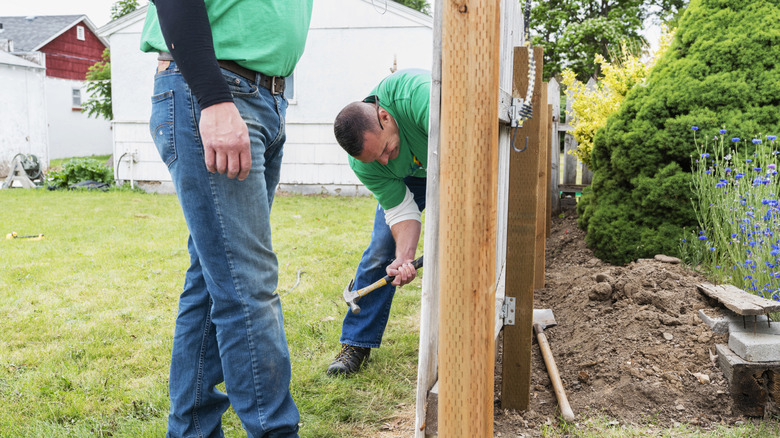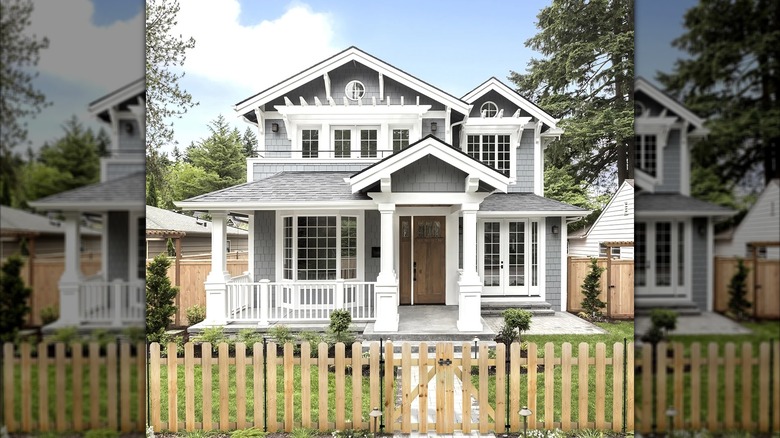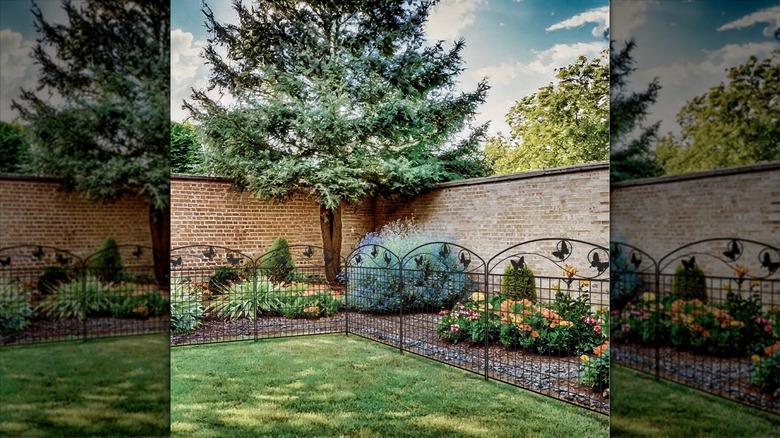How Durable Is Yardlink's No-Dig Fence? Here's What We Know Based On Reviews
We may receive a commission on purchases made from links.
A fence can be a fantastic addition to your property whether you want to create a safe place for your kids and pets to play, enjoy a little more privacy while lounging on your patio, or just add aesthetic appeal to your yard. Although there is some debate over whether installing a fence will increase the value of your home, the enhanced curb appeal and functionality are often worth the financial investment. However, anyone who has considered installing a fence knows that it can involve complex permitting, expensive materials, and intense labor. If you dread the idea of installing a traditional fence but still want a decorative look and added curb appeal, a durable option like Yardlink's no-dig fence can be a great alternative.
With over a dozen fence styles to choose from, including the modern black Vista Fence, classic Cedar Wood, and elegant Beaumont, Yardlink specializes in no-dig products that are specifically designed for easy installation. To find out if Yardlink's no-dig fencing system could measure up to traditional fences in terms of durability, we researched the company's manufacturing and warranty details before heading straight to the hundreds of customer reviews online. We found that in general, reviewers say that the quality of the wood panels is excellent, that the metal panels' finish is thick and doesn't scratch, and that the products are easy to install.
Yardlink no-dig fence panels are made with materials that can withstand the weather
Installing a no-dig fence is one of the most cost-effective ways to add a fence to your property, as it requires much less work and expense than a traditional fence. Instead of requiring you to dig holes, set posts, and pour concrete, the Yardlink fences are mostly sold in kits that contain a simple post system that can be driven into the ground with a mallet or sledgehammer like the bestselling REAL STEEL 3lb Drilling Club. Many of the Yardlink fences, like the charming Butterfly Rural Panels, are made of galvanized steel with a weatherproof powder-coated finish. The combination significantly reduces the risk of rust over time, making the panels a durable choice. Yardlink offers a one-year warranty on its steel fencing and five years of protection from defects in workmanship and materials.
Other Yardlink fencing options, like the Cedar Fence Panels, are constructed of mold and rot-resistant wood with natural oils and a tight grain pattern that help protect it from the elements. Although no wood is entirely weather-resistant, cedar is an excellent choice for outdoors because it doesn't warp or decay in bad weather. Untreated cedar can last more than a decade, but treating your cedar fence panels with a clear stain like Thompson's WaterSeal Multi-Surface Waterproofer can extend the life of your no-dig fence.
A traditional fence is a better solution if you have pets or need privacy
There are some drawbacks to no-dig fencing that you should be aware of before investing in Yardlink panels. Most of the Yardlink fence styles feature decorative scrollwork or slats that don't provide any additional privacy. Also, the panels have a maximum height of four feet. This may be tall enough to keep a small dog contained, but if you have larger animals that are part-time escape artists, a traditional fence is a more sensible choice. Most reviewers were extremely pleased with the overall strength of their Yardlink fencing once installed, but one reviewer called the panels "very flimsy" when it came to their powerful pooch.
You'll also want to go the traditional fence route if you need a fence installed over sloped or hilly areas or a significant incline, as Yardlink stakes are designed to be used on relatively flat ground. Soft ground can also present a durability issue. The stake sleeves are intended to be held in place once driven into the dirt, but if you have drainage issues, muddy spots, or frequent freeze-and-thaw cycles, the spikes, posts, and fence panels can all shift significantly during weather events. Also, there's no way around doing some prep work before installing a no-dig fence. You'll still need to have underground utilities clearly marked, follow local permitting regulations, and make sure your fence style is approved by your homeowners association if you have one.


